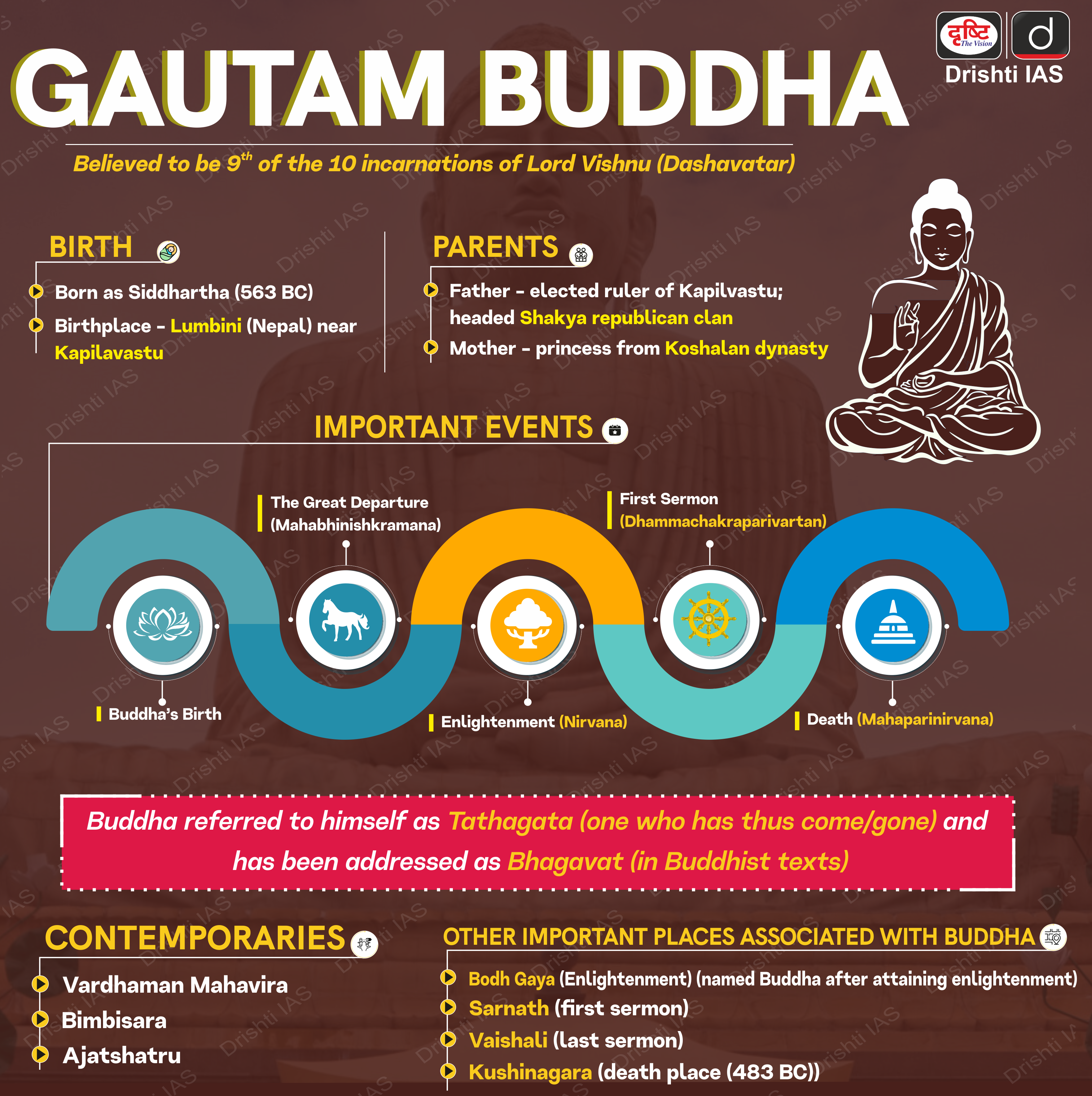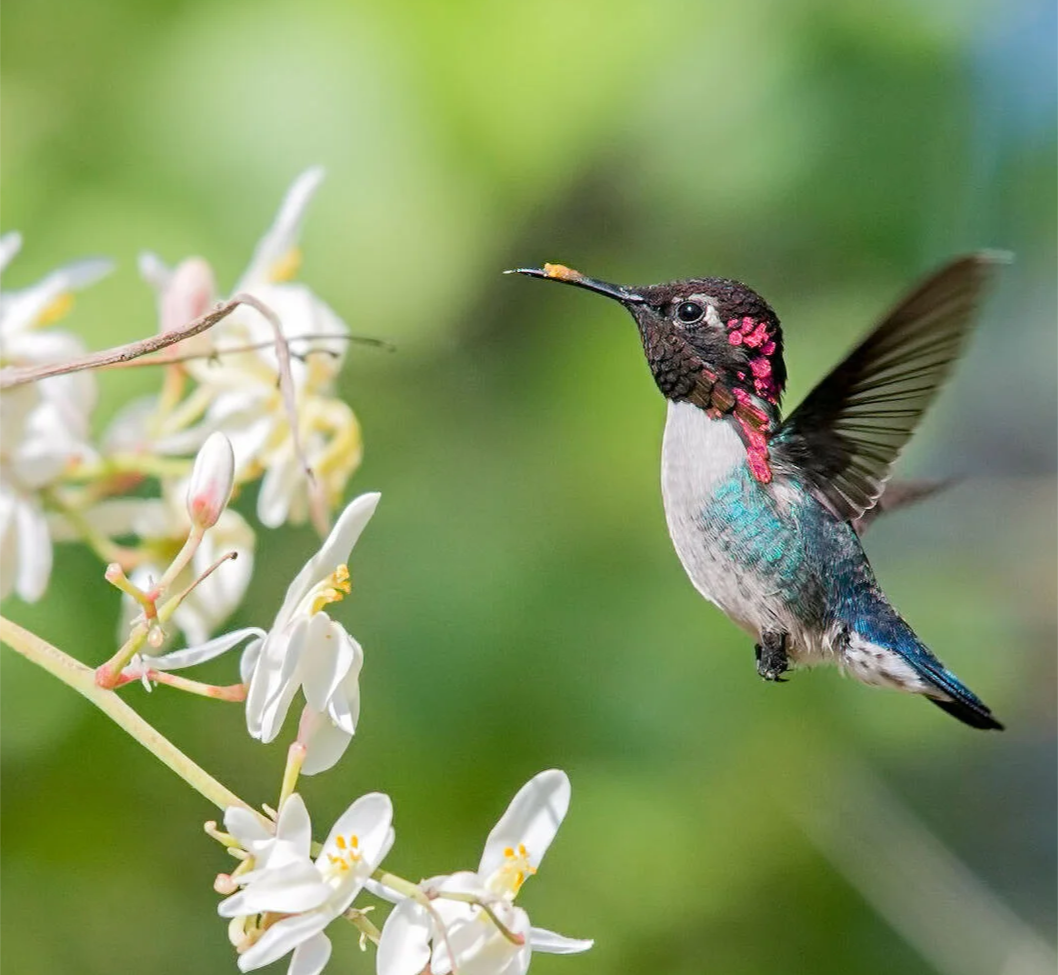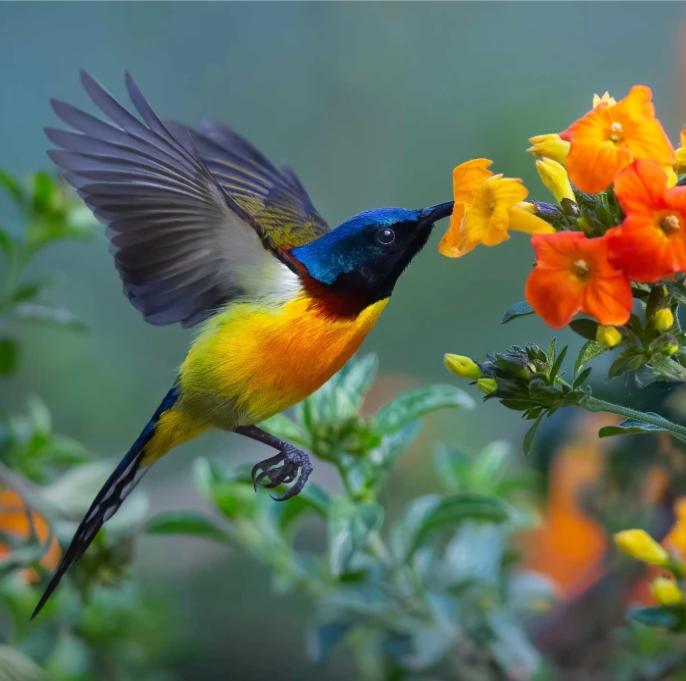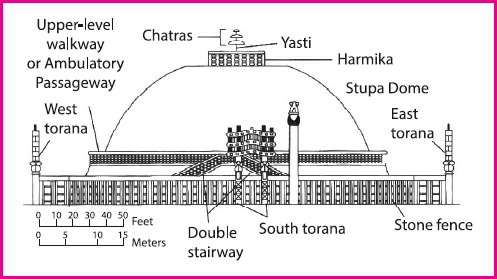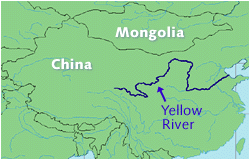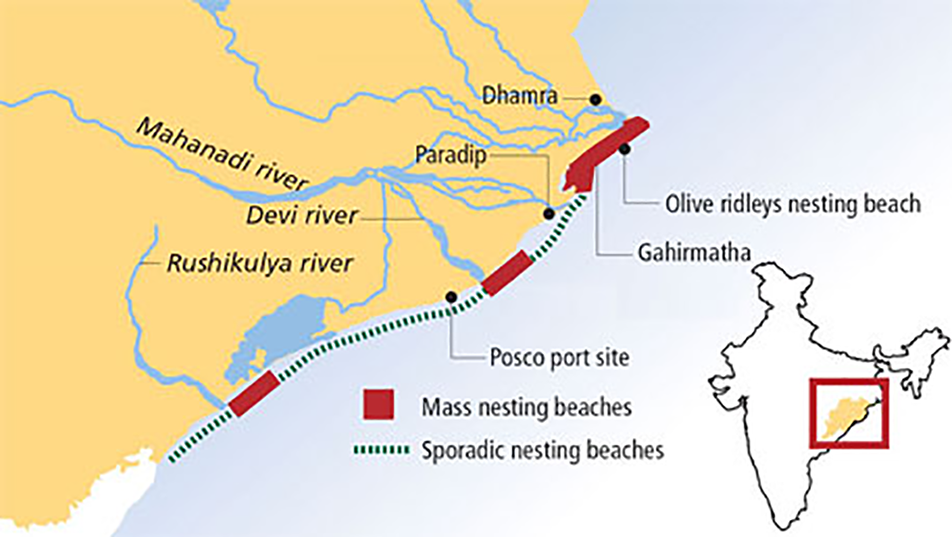Infographics
Governance
Mission Shakti
For Prelims: Mission Shakti, One Stop Centre (OSC), Women Helpline (WHL), Beti Bachao Beti Padhao (BBBP), National Creche Scheme, Pradhan Mantri Matru Vandana Yojana.
For Mains: Components of Mission Shakti, Protection of Women from Domestic Violence Act, 2005.
Why in News?
The Supreme Court has sought more information from the government about Mission Shakti, an umbrella scheme for the safety, security, and empowerment of women.
- This comes after concerns were raised about a possible shortage of protection officers to handle domestic violence cases.
What are the Raised Concerns Regarding Domestic Violence?
- According to a government document presented in court, 4.4 lakh cases of domestic assault are pending across 801 districts.
- While most of these districts have one-stop centres to assist victims under Mission Shakti, it remains unclear how many of them actually have protection officers to effectively support survivors.
- Under Section 8 of the Protection of Women from Domestic Violence Act, 2005, the appointment of protection officers is mandatory.
- Protection officers, who should ideally be women, have a pivotal role under the law. They help victims file complaints, give Information to the police, provide immediate protection and support, inform victims about their legal rights and support them through court proceedings.
What is Mission Shakti?
- About: Mission Shakti’ is a scheme of Ministry of Women and Child Development aimed at strengthening interventions for women safety, security and empowerment.
- It seeks to realise the Government’s commitment for “women-led development‟ by addressing issues affecting women on a life-cycle continuum basis and by making them equal partners in nation-building through convergence and citizen-ownership.
- Sub-Schemes: It has two sub-schemes - 'Sambal' and 'Samarthya'. While the "Sambal" sub-scheme is for safety and security of women, the "Samarthya" sub-scheme is for empowerment of women.
- Sambhal:
- The components of 'Sambal' sub-scheme consist of erstwhile schemes of One Stop Centre (OSC), Women Helpline (WHL), Beti Bachao Beti Padhao (BBBP) with a new component of Nari Adalats - women's collectives to promote and facilitate alternative dispute resolution and gender justice in society and within families.
- Samarthya:
- The components of 'Samarthya' sub-scheme consist of erstwhile schemes of Ujjwala, Swadhar Greh and Working Women Hostel have been included with modifications.
- In addition, the existing schemes of National Creche Scheme for children of working mothers and Pradhan Mantri Matru Vandana Yojana under umbrella ICDS have now been included in Samarthya.
- A new component of Gap Funding for Economic Empowerment has also been added in the Samarthya Scheme.
- Sambhal:
UPSC Civil Services Examination Previous Year Question (PYQ)
Q.‘’Empowering women is the key to control the population growth.’’ Discuss. (2019)


International Relations
India-Germany Cooperation on Innovation
Prelims: India-Germany Cooperation on innovation, Artificial Intelligence and 6G, Green Hydrogen, SDG, IPOI.
Mains: India-Germany Cooperation on innovation.
Why in News?
Recently, the Indian Prime Minister met with the German-Chancellor and agreed on a Vision Statement to enhance cooperation on innovation and technology.
- It is considered to be the most comprehensive economic document signed between the two major economies to date.
What is the Vision Document all About?
- It focuses on deepening ties between industry and spurring cooperation on development of advanced technologies like Artificial Intelligence and 6G.
- This Cooperation aims at benefiting humanity and is firmly guided by their shared democratic values and respect for universal human rights.
- India and Germany share a long history of cooperation in science and technology, research and innovation, institutionalized under the framework of the Inter-Governmental Agreement on ‘Cooperation in Scientific Research and Technological Development’ signed in May 1974.
What are the Key Highlights of the Meeting?
- Green and Sustainable Development Partnership:
- Both leaders discussed progress on the Green and Sustainable Development Partnership (GSDP), which India and Germany had launched during the Indian PM’s visit to Berlin for the 6th IGC (Inter-Governmental Consultations).
- The GSDP is an umbrella partnership that provides political guidance and steer to robust ties in climate action and SDGs (Sustainable Development Goals).
- Under this, Germany will also place €10 billion in new and additional commitments under their development cooperation portfolio in India.
- Green Hydrogen:
- Both countries agreed to cooperate on Green Hydrogen.
- The Indo-German Green Hydrogen Task Force was constituted in September 2022 and an Action Plan is close to finalization.
- Triangular Development Cooperation:
- During the sixth IGC, India and Germany agreed to work on development projects in third countries.
- The four projects, announced in May 2022, are now in different stages of implementation:
- Cameroon: Potato Seed Production through Rooted Apical Cuttings (RAC) Technology.
- Malawi: Agri Business Incubator Models for Women in Agriculture & Food Systems
- Ghana: Developing Bamboo-Based Enterprises for Sustainable Livelihood and Income Generation in Ghana
- Peru: Development of a geospatial portal prototype for planning, monitoring, and evaluation of the Ministry of Development and Social Inclusion of Peru (MIDIS) interventions and social programs.
- Indo-Pacific Oceans Initiative:
- Germany has come on board the Indo-Pacific Oceans Initiative (IPOI).
- Submarines:
- The two countries discussed on the proposed deal for Germany to build jointly with India six conventional submarines for the Indian Navy.
What are the Key Facts About Germany?
- Bordering Countries: Germany shares borders with nine countries, France, Luxembourg, Denmark, Belgium, Switzerland, Austria, Czech Republic, the Netherlands and Poland.
- Location: It is located in Central Europe, bordering the Baltic Sea and the North Sea.
- Rivers: Danube, Rhine, Ems, Weser, Elbe and Oder
- Forest: The Black Forest is Germany's largest and most famous wooded area located in the southwest near the Swiss border. It is the source of the Danube, one of Europe's longest rivers.
- Form of Government: Germany is a federal parliamentary republic with a President as the head of state and a Chancellor as the head of government.
- Main Industrial Regions: Ruhr, Hanover, Munich, Frankfurt am Main, and Stuttgart.
UPSC Civil Services Examination Previous Year Question (PYQ)
Q. Which one of the following pairs is not correctly matched? (2009)
City River
(a) Berlin : Rhine
(b) London : Thames
(c) New York : Hudson
(d) Vienna : Danube
Ans: (a)
Exp:
- Berlin is situated at the Spree River, which runs through Germany and Northern Czech Republic. Therefore, option (a) is the correct answer.


Governance
International Intellectual Property Index 2023
For Prelims: Universal Declaration of Human Rights, World Trade Organisation, National Intellectual Property Rights (IPR) Policy 2016, Trade Related Aspects of Intellectual Property (TRIPS Agreement).
For Mains: India and IPR, Issues Related to IPR.
Why in News?
Recently, India ranks 42nd among 55 leading global economies on the International Intellectual Property (IP) Index 2023 released by the U.S. Chambers of Commerce, according to which India is ripe to become a leader for emerging markets seeking to transform their economy through IP-driven innovation.
- US topped the International IP Index followed by United Kingdom and France.
What is International IP Index?
- The Index evaluates the IP framework in each economy across 50 unique indicators which industry believes represent economies with the most effective IP systems.
- The indicators create a snapshot of an economy overall IP ecosystem and span nine categories of protection: Patents, Copyrights, Trademarks, Design Rights, Trade Secrets, Commercialization of IP Assets, Enforcement, Systemic Efficiency, Membership and Ratification of International Treaties.
What is Intellectual Property?
- About:
- Intellectual Property (IP) refers to creations of the mind, such as inventions, literary and artistic works, symbols, names, and images used in commerce.
- It is a form of legal protection in the form of Intellectual Property Rights (IPR) given to individuals or companies for their creative and innovative works.
- These rights are outlined in Article 27 of the Universal Declaration of Human Rights.
- These legal protections allow the creators to control use of their work and prevent others from using or reproducing them without permission.
- Types:
- The main types of IP include patents for inventions, trademarks for branding, copyrights for artistic and literary works, trade secrets for confidential business information, and industrial designs for product appearance.
- India and IPR:
- India is a member of the World Trade Organisation and committed to the Agreement on Trade Related Aspects of Intellectual Property (TRIPS Agreement).
- India is also a member of World Intellectual Property Organization, a body responsible for the promotion of the protection of intellectual property rights throughout the world.
- The National Intellectual Property Rights (IPR) Policy 2016 was adopted in May 2016 as a vision document to guide future development of IPRs in the country.
- Its clarion call is “Creative India; Innovative India”.
- Issues Related to IPR:
- Enforcement: Despite efforts to strengthen IP enforcement, piracy and counterfeiting remain significant problems in India.
- Enforcement agencies often lack the resources and expertise to effectively combat these issues, leading to low rates of prosecution and conviction.
- Patent Backlog: The backlog of patent applications in India is a major challenge.
- This leads to delays in granting patents and creates uncertainty for innovators seeking to protect their inventions.
- Lack of IP Awareness: There is still a lack of awareness and understanding of IPR among many businesses and individuals in India.
- This can lead to inadvertent infringement of IP rights, as well as challenges in enforcing these rights.
- Enforcement: Despite efforts to strengthen IP enforcement, piracy and counterfeiting remain significant problems in India.
Way Forward
- Enhancing Enforcement: India needs to strengthen its IP enforcement mechanisms, including increasing resources and expertise for enforcement agencies, improving coordination between different agencies, and streamlining legal procedures for IP disputes.
- Streamlining Regulations: India needs to simplify and streamline the regulatory environment for IPR, including reducing administrative burdens and increasing transparency in IP registration and enforcement procedures.
- Encouraging Innovation: India needs to incentivize innovation by offering tax incentives and funding for research and development, as well as promoting collaborations between industry, academia, and government.
UPSC Civil Services Examination, Previous Year Questions (PYQs)
Prelims
Q1. With reference to the ‘National Intellectual Property Rights Policy’, consider the following statements: (2017)
- It reiterates India’s commitment to the Doha Development Agenda and the TRIPS Agreement.
- Department of Industrial Policy and Promotion is the nodal agency for regulating intellectual property rights in India.
Which of the above statements is/are correct?
(a) 1 only
(b) 2 only
(c) Both 1 and 2
(d) Neither 1 nor 2
Ans: (c)
Q2. Consider the following statements: (2019)
- According to the Indian Patents Act, a biological process to create a seed can be patented in India.
- In India, there is no Intellectual Property Appellate Board.
- Plant varieties are not eligible to be patented in India.
Which of the statements given above is/are correct?
(a) 1 and 3 only
(b) 2 and 3 only
(c) 3 only
(d) 1, 2 and 3
Ans: (c)
Mains
Q. In a globalized world, Intellectual Property Rights assume significance and are a source of litigation. Broadly distinguish between the terms—Copyrights, Patents and Trade Secrets. (2014)


Important Facts For Prelims
ALMA Telescope
Why in News?
The Atacama Large Millimetre/submillimetre Array (ALMA) is a radio telescope located in the Atacama Desert of northern Chile. It is set to receive software and hardware upgrades.
- The upgrades will enable ALMA to collect more data and produce sharper images.
What is ALMA?
- About:
- ALMA is a state-of-the-art telescope that studies celestial objects at millimetre and submillimetre wavelengths — they can penetrate through dust clouds and help astronomers examine dim and distant galaxies and stars out there.
- ALMA is an international partnership of the European Southern Observatory (ESO), the U.S. National Science Foundation (NSF) and the National Institutes of Natural Sciences (NINS) of Japan, together with NRC (Canada), MOST and ASIAA (Taiwan), and KASI (Republic of Korea), in cooperation with the Republic of Chile.
- Properties:
- It also has extraordinary sensitivity, which allows it to detect even extremely faint radio signals.
- Each of its 66 antennas is equipped with a set of receivers that are designed to detect specific ranges of wavelengths on the electromagnetic spectrum.
- To combine the data collected by each antenna into a single image, ALMA uses a correlator.
- The correlator is a powerful supercomputer that processes the vast amounts of data collected by the antennas and creates detailed images of celestial objects with exceptional resolution.
- This technology allows astronomers to study distant galaxies, stars, and other celestial bodies with a level of detail never before possible.
- Discoveries Made by ALMA:
- In 2013, ALMA discovered starburst galaxies that existed earlier in the universe's history than previously thought.
- ALMA also provided detailed images of a protoplanetary disc around a young star, HL Tauri, in 2014, which challenged existing theories about planetary formation.
- In 2015, the telescope helped scientists observe the Einstein ring phenomenon, where light from a galaxy or star passes by a massive object on its way to Earth.
Why is ALMA located in Chile’s Atacama Desert?
- It is situated at an altitude of 16,570 feet (5,050 metres) above sea level on the Chajnantor plateau in Chile’s Atacama Desert as the millimetre and submillimetre waves observed by it are very susceptible to atmospheric water vapour absorption on Earth.
- Moreover, the desert is the driest place in the world, meaning most of the nights here are clear of clouds and free of light-distorting moisture — making it a perfect location for examining the universe.


Important Facts For Prelims
National Science Day 2023
Why in News?
In 1986, the Government of India, designated February 28 as National Science Day to commemorate the announcement of the discovery of the “Raman Effect”.
- This year’s edition is being celebrated under the theme of “Global Science for Global Wellbeing”, in light of India’s G20 presidency.
What is the Raman Effect?
- Physicist CV Raman won the Nobel Prize in 1930 for his discovery of the Raman Effect.
- It refers to the inelastic scattering of light by matter, resulting in a shift in the frequency of the scattered light.
- In simpler words, it is a change in the wavelength of light that occurs when a light beam is deflected by molecules.
- The Raman effect forms the basis for Raman spectroscopy which is used by chemists and physicists to gain information about materials.
- Spectroscopy is the study of the interaction between matter and electromagnetic radiation.
What are the Other Indian Nobel Laureates in the Field of Science?
| Nobel Laureate | Subject | Topic | Year |
| Har Gobind Khurana | Medicine | Elucidation of the genetic code and its function in protein synthesis. | 1968 |
| Subrahmanyan Chandrasekhar | Physics | Physical processes of importance to the structure and evolution of stars. | 1983 |
| Venkatraman Ramakrishnan | Chemistry | Structure and function of the ribosome. | 2009 |
What were the Major Contribution of India in the Field of Science?
- Mathematics: India has made significant contributions to the field of mathematics, including the concept of zero, decimal system, algebra, and trigonometry.
- Indian mathematicians such as Aryabhata, Brahmagupta (provide the formula for the area of a cyclic quadrilateral), and Ramanujan have made pioneering contributions to the field.
- Astronomy: Ancient Indian astronomer Aryabhatta made significant contributions to the field of astronomy, including the determination of the Earth's circumference, the discovery of the lunar nodes, and the development of the heliocentric model of the solar system.
- The Jyotisa Vedanga, the first Vedic text to mention astronomical data, records events going back as far as 4000 BCE.
- Medicine: Ayurveda, the traditional system of medicine in India, is one of the oldest medical systems in the world.
- Ancient Indian texts such as the Charaka Samhita and the Sushruta Samhita provide detailed descriptions of various medical conditions and their treatments.
- Technology: India has a long history of technological innovation, including the development of metallurgy, shipbuilding, and textile production.
- The ancient city of Mohenjo-Daro, which existed in the Indus Valley Civilization over 4,500 years ago, had a sophisticated sewage and drainage system.
- Space Exploration: India has made significant progress in space exploration in recent years, including the successful launch of the Mars Orbiter Mission in 2014 and the Chandrayaan mission and Gaganyaan, India's first human space mission, is set to launch in 2024.
UPSC Civil Services Examination, Previous Year Question (PYQ)
Q. How is science interwoven deeply with our lives? What are the striking changes in agriculture triggered off by science-based technologies? (2020)


Important Facts For Prelims
Aztec Hummingbirds and Indian Sunbirds
Why in News?
Recently a study found that the loss of a key gene, FBP2 makes hummingbirds more efficient at breaking down sugar to use it for energy.
- Hummingbirds’ hovering flight, a seemingly effortless suspension in air, is achieved by burning sugar in their flight muscles at a blisteringly fast rate.
What are Hummingbirds?
- About:
- Hummingbird, native to American continent, has approximately 350 species which are found in Iridescent colours. These birds are comparable to India’s Sunbirds.
- Aztecs referred to them as Huitzilin or ‘A ray of sun’.
- Size:
- These are small birds, barely 5cm long and weigh 2 grams.
- Humming:
- Their signature ‘Hum’ is created by beating the wings upto 50 times per second.
- Manoeuvrability:
- They can hover majestically as they sip nectar from a flower (mostly Tubular flowers such as Lantana and rhododendron), and even fly backward.
- Relative to their body mass, hummingbirds have the highest metabolic rate (calories burnt per minute) among vertebrates. Most of this energy comes from nectar.
- Rapid sugar uptake by their digestive system ensures that they utilise energy from nectar ingested just a few minutes ago.
- Mimicry and Dance:
- Hummingbirds are capable of vocal mimicry like parrots and some songbirds.
- They are also able to align their muscular movements with auditory sensations that come to their ears creating a dance.
How are Hummingbirds similar to Sunbirds?
- About:
- Indian Sunbirds, though unrelated to Hummingbirds share many common features through convergent evolution. They are part of Nectariniidae family.
- Though slightly larger, the sunbirds can hover briefly, and go for bright, tubular flowers. They are critical pollinators of the ‘Flame of the Forest’.
- As the energy demands of hovering is very high, sunbirds need to ‘perch’ while feeding, unlike Hummingbirds.
- Habitat:
- They live in tropical forests, inland wetlands, savannas, and scrubland in Africa, southern Asia, the Middle East, and northern Australia.
Note: Flame of the forest is a leguminous tree, Butea frondosa, native to Eastern India and Myanmar, having hanging clusters of scarlet flowers.
What is the Significance of Recent Research?
- Recent genome studies have shown that hummingbirds lost the gene (FBP2) for a key enzyme involved in gluconeogenesis around the time when hovering appeared.
- While intense exercise in humans can lead to a spike in blood glucose levels due to gluconeogenesis. That is not the case in hummingbirds.
- They have a unique metabolism that allows them to efficiently use energy from nectar.
- This study could lead to new insights into energy metabolism and potential therapeutic applications for humans.
Note: Gluconeogenesis is a process that transforms non-carbohydrate substrates (such as lactate, amino acids, and glycerol) into glucose.


Important Facts For Prelims
ASI Discovers 1,300-yr-old Buddhist Stupa
Why in News?
Recently, the Archaeological Survey of India (ASI) discovered a 1,300-year-old stupa right in the middle of a mining site in Odisha’s Jajpur district at a Khondalite mining site.
- It is the place from where Khondalite stones were supplied for the beautification project around the 12th Century Shree Jagannath Temple in Puri.
What are the Findings of the ASI?
- The stupa could be 4.5-metre tall and initial assessment showed it may belong to the 7th or 8th century.
- It was found at Parabhadi which is situated near Lalitagiri, a major Buddhist complex, having a large number of stupas and monasteries.
- Lalitgiri Buddhist site is believed to be the most sacred among the three sites (Lalitagiri, Ratnagiri and Udayagiri) as it unearthed a massive stupa where a relic of Buddha was discovered inside a stone casket.
What are the Khondalite Stones?
- Khondalite is a type of metamorphic rock that is found in the Eastern Ghats region of India, particularly in the state of Odisha. It is named after the Khondalite Group of rocks, which is believed to have formed around 1.6 billion years ago during the Proterozoic era.
- Khondalite is primarily composed of feldspar, quartz, and mica, and has a distinct pinkish-grey coloration. It is commonly used as a decorative stone in construction and is particularly prized for its durability and resistance to weathering.
- Khondalite stones were widely used in ancient temple complexes. They are proposed to be used widely to maintain aesthetic value of some projects such as heritage security zone, Jagannath Ballav pilgrim centre, etc.
What is Stupa?
- About: Stupas were burial mounds prevalent in India from the vedic period.
- Architecture: Stupas consist of a cylindrical drum with a circular anda and a harmika and a chhatra on the top.
- Anda: Hemispherical mound symbolic of the mound of dirt used to cover Buddha’s remains (in many stupas actual relics were used).
- Harmika: Square railing on top of the mound.
- Chhatra: Central pillar supporting a triple umbrella form.
- Material Used: The core of the stupa was made of unburnt brick while the outer surface was made by using burnt bricks, which were then covered with a thick layer of plaster and medhi and the toran were decorated with wooden sculptures.
- Examples:
- Sanchi Stupa in Madhya Pradesh is the most famous of the Ashokan stupas.
- Piprahwa Stupa in Uttar Pradesh is the oldest one.
- Stupas built after the death of Buddha: Rajagriha, Vaishali, Kapilavastu, Allakappa, Ramagrama, Vethapida, Pava, Kushinagar and Pippalivana.
- Stupa at Bairat, Rajasthan: Grand stupa with a circular mound and a circumambulatory path.
UPSC Civil Services Examination Previous Year Question (PYQ)
Prelims
Q. Which one of the following statements is correct? (2021)
(a) Ajanta Caves lie in the gorge of Waghora river.
(b) Sanchi Stupa lies in the gorge of Chambal river.
(c) Pandu-lena Cave Shrines lie in the gorge of Narmada river.
(d) Amaravati Stupa lies in the gorge of Godavari river.
Ans: (a)
Exp:
- Ajanta is a series of rock-cut caves in the Sahyadri ranges (Western Ghats) on Waghora river near Aurangabad in Maharashtra. There are a total of 29 caves (all Buddhist) of which 25 were used as Viharas or residential caves while 4 were used as Chaitya or prayer halls. This UNESCO World Heritage Site is a collection of paintings, sculptures and temples of Buddhist art, constructed from 200 BC to 500 AD.
- Sanchi Stupa is located in west-central Madhya Pradesh. It lies in an upland plateau region, just west of the Betwa River and about 5 miles (8 km) southwest of Vidisha. It was designated a UNESCO World Heritage site in 1989.
- The Buddhist monument Pandavleni Caves, also known by the name Pandu Lena caves and Trirashmi caves are a group of 24 rock-cut caves. They are located on the north face of Trivashmi hill of Nasik city. Nasik city is situated on the banks of river Godavari.
- Amravati Stupa illustrates Lord Buddha in a human form, subduing an elephant. The stupa is taller than the Sanchi stupa and has high platforms, extending in the four cardinal directions, along with a huge circular dome. Amravati Stupa is situated near river Krishna.
- Therefore, option (a) is the correct answer.
Mains
Q. Early Buddhist Stupa-art, while depicting folk motifs and narratives successfully expounds Buddhist ideals. Elucidate. (2016)


Rapid Fire
Rapid Fire Current Affairs
One Rank-One Pension (OROP)
Following the Supreme court’s observations, the defence ministry instructed the Controller General Defence Accounts (CGDA) to release all One Rank-One Pension (OROP) arrears in a single installment.
OROP means the payment of the same pension to military officers for the same rank for the same length of service, irrespective of the date of retirement. Before OROP, ex-servicemen used to get pensions as per the Pay Commission's recommendations of the time when they had retired. Uttar Pradesh and Punjab have the highest number of OROP beneficiaries.
The implementation of the scheme was based on the recommendation of the Koshiyari committee formed under the chairmanship of Bhagat Singh Koshiyari.
Read More: One Rank-One Pension (OROP)
The Yellow River
The mighty Yellow River, the ‘mother river’ of Chinese civilisation, has also been known as the ‘River of Disaster’ and ‘China’s sorrow’ because of the devastating floods it has caused since prehistory. According to a new study, the Chinese practice of building embankments is also responsible for the flooding upstream of the Loess Plateau which is surrounded by the Yellow river.
The Yellow River is the sixth-longest river in the world and is also the most sediment-laden. Also known as Huang He, it originates in the province of Qinghai, flows through the Loess Plateau, where it takes sediment that gives its waters their characteristic yellow colour.
The sediment or loess (a type of silt) from the plateau usually settles on the river bed and raises its height, making the river especially flood-prone in the lower reaches, on the North China Plain.
Olive Ridley Turtles
Officials and scientists are unsure as to what could have caused the start of the mass nesting or ‘Arribada’ of Olive Ridley turtles at the Rushikulya rookery in Odisha’s district. Rushikulya beach is considered the second biggest rookery for sea turtles in India after Gahirmatha Marine Sanctuary, Odisha. Suitable climatic and beach conditions were some of the reasons for the early mass nesting of Olive Ridley turtles.
The Olive ridley turtles are the smallest and most abundant of all sea turtles found in the world. These turtles are carnivores and get their name from their olive-coloured carapace.
They are best known for their unique mass nesting called Arribada, where thousands of females come together on the same beach to lay eggs. They are found in warm waters of the Pacific, Atlantic and Indian oceans. Olive Ridley Turtles are included in Schedule 1 of the Wildlife Protection Act, 1972, listed as vulnerable in the IUCN Red List and mentioned in appendix I of the Convention on International Trade in Endangered Species of Wild Fauna and Flora (CITES).
Read More: Olive Ridley: Threats & Related Initiatives
Bisphenol A (BPA)
Bisphenol A (BPA) is a chemical used in polycarbonate plastics and epoxy resins (class of thermosetting polymers) and is particularly found in water bottles, baby bottles, and other food containers. BPA contaminates surface freshwater through industrial effluents and discharge leachates (Any contaminated liquid that is generated from water percolating through a solid waste disposal site, accumulating contaminants, and moving into subsurface areas).
The discharge of BPA into the waters occurs when plastic turns soft and when there is adequate sunshine. As per a recent study, it also speeds up the breeding of mosquitoes. BPA, when ingested, disrupts the endocrine system by interfering with hormones and affects the brain and prostate gland of foetuses, infants and children.
Read More: Effective Plastic Waste Management



